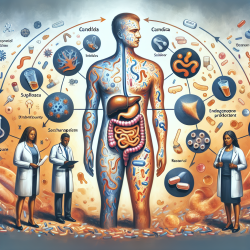Introduction
In the ever-evolving field of mental health, data-driven decisions and evidence-based practices are crucial for practitioners aiming to improve outcomes. A recent study titled "Self-reflection and screening mental health on Canadian campuses: validation of the mental health continuum model" offers valuable insights into a tool that can enhance self-reflection and screening processes. This blog post explores how practitioners, especially those involved in online therapy services like TinyEYE, can implement the findings of this research to improve their skills and outcomes for children and young adults.
Understanding the Mental Health Continuum Model
The Mental Health Continuum (MHC) model, initially developed by the Canadian Department of National Defense, is a tool designed to help individuals monitor and reflect on their mental health status. It comprises six domains: mood, attitude and performance, sleep, physical symptoms, social behavior, and alcohol and gambling. The model uses a color-coded system (green, yellow, orange, red) to indicate varying levels of mental health severity, thus bypassing stigmatizing diagnostic labels.
Research Findings
The study conducted a thorough psychometric testing of the MHC model among undergraduate students across three Canadian universities. Results showed that the MHC tool is two-dimensional and that all six domains are crucial for assessing mental health. The tool demonstrated strong construct validity when tested against the Kessler Psychological Distress Scale (K-10), indicating its reliability as a self-assessment tool.
Implementing the MHC Model in Practice
Practitioners can leverage the MHC model in several ways:
- Self-Reflection: Encourage clients to use the MHC model for regular self-assessment. This can help them identify early signs of mental health issues and take proactive measures.
- Screening: Incorporate the MHC model into initial assessments to gain a comprehensive understanding of a client's mental health status across multiple domains.
- Education: Use the model as an educational tool to promote mental health awareness and reduce stigma associated with mental health issues.
Encouraging Further Research
While the MHC model shows promise, further research is needed to validate its effectiveness across diverse populations and settings. Practitioners are encouraged to contribute to this body of research by documenting their experiences and outcomes when using the MHC model in practice.
Conclusion
The MHC model offers a practical and effective tool for enhancing mental health self-reflection and screening. By integrating this model into their practice, practitioners can improve their ability to identify and address mental health issues early, ultimately leading to better outcomes for their clients.
To read the original research paper, please follow this link: Self-reflection and screening mental health on Canadian campuses: validation of the mental health continuum model.










